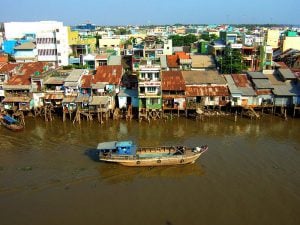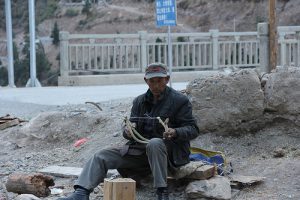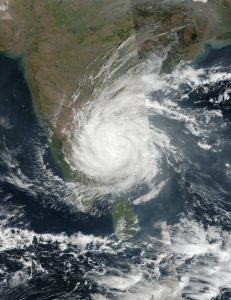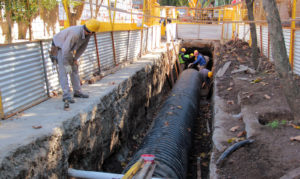A report published in September by the Stimson Center, a Washington D.C.-based think-tank, challenges prevailing notions about the future of hydropower in the Mekong subregion, an area including Vietnam, Cambodia, Laos, Thailand, Myanmar, and southwestern China.
The report focuses on Laos, which in years past has proclaimed itself the future “Battery of Southeast Asia,” by aggressively developing hydropower dams on the Mekong. Laos has already built 29 large dams along the river’s mainstream and tributaries, with plans for over 100 in total. The land-locked country remains the poorest in Southeast Asia, and has planned to raise cash by exporting electricity to consumers in neighbouring countries.
But project developers of these dams – who are typically Thai and Chinese companies – have faced criticism from civil society groups and international observers for the myriad social and environmental consequences brought on by dam construction. The Mekong is home to an estimated 1,000 species of fish, many of which migrate along the river and replenish the region’s fisheries. By changing the hydrology of the river, these dams threaten the biodiversity of the Mekong and the livelihoods of fishermen and farmers throughout the region. In times of drought, as has been experienced this year, the dams can cause regional insecurity by contributing to water scarcity problems downriver.
While hydropower construction has continued in Mekong apace despite these dangers, the Stimson report argues that new markets and technologies are creating an opportunity to change course.
Also see: Blasting the Mekong
Challenges for hydropower in the Mekong
The report highlights new developments that could steer Laos away from further damming on the Mekong. First, following a period of economic and political liberalisation, Myanmar is emerging as a competitor for energy infrastructure finance. Myanmar boasts nearly 100 gigawatts of potential hydropower capacity, far exceeding what is possible in Laos. Such a glut of potential projects in the region is likely to siphon away financing that might otherwise go towards hydropower development in Laos.
At the same time, China’s economic slowdown could signal the end for cheap and easy hydropower finance in the region. In previous years, Chinese state planners encouraged outbound investment in strategic sectors such as hydropower projects in Southeast Asia. However, the report notes that government concerns about non-performing loans on the books of Chinese banks seem to have reduced the funding available for some projects in Laos. Rising local awareness about the social and environmental costs of these dams also adds a layer of risk that financiers may find discouraging.
Perhaps most critically, it appears as if planned generation in Southeast Asia is outpacing the region’s appetite for energy. China, once envisioned as a potential market for Laos power, is already experiencing serious overcapacity in its domestic power market. Thailand, while still a major investor in Lao hydro projects, has consistently overestimated its own consumption levels – and has lots of room to cut demand through energy efficiency measures. Both Cambodia and Vietnam have planned to reduce their reliance on imported energy, with the latter investing heavily in coal-fired power plants.
A new vision
Taken together, these signals make a compelling case for a new energy strategy in Laos and in the region as a whole.
First, the report suggests that Lao planners should invest in a backbone transmission network to connect its patchwork regional grids. This is a good idea for a variety of reasons. A nationwide transmission system would help open up markets for Lao electricity both domestically and internationally by creating a more flexible grid. It would help planners integrate renewable energy resources like solar and wind. It would also be a great step towards electrifying the remaining 20% of the country still without power.
Secondly, planners should consider ways to diversify the country’s energy mix with wind and solar. With too much reliance on hydro, the region risks facing shortages during drought conditions, which will become increasingly likely due to the effects of climate change.
It also makes good economic sense. Utility-scale solar is now nearly cost-competitive with hydro in Laos. Solar avoids the social and environmental challenges associated with hydro that have led to disruptive public protests and cost overruns, making it a safer bet.
In fact, solar already plays an important role in electrifying Laos’ rural communities. Companies like Sunlabob have pioneered low-cost solar home systems to provide basic electricity services like lighting and device charging to remote communities. A new energy outlook from Lao energy planners would also be a great opportunity to optimize plans to fully electrify the country, whether by grid connection, solar home systems, or village-level microgrids.
International cooperation needed
Lastly, greater international cooperation in energy planning is needed. The construction of a national power grid will require technical assistance from international experts. The Asian Development Bank is leading this effort, and plans to invest $400 million in a national transmission network by 2020. The US has already begun providing power planning and optimization assistance through the Department of Energy and its national laboratories.
The US is also supporting renewables in Laos. In advance of President Obama’s visit to Laos in September 2016, the US Trade and Development Agency committed to funding a feasibility study for a 20 megawatt solar farm in the country.
China, as a regional power with an abiding interest in Laos’ energy sector, can also benefit from this shift. The world’s largest solar module manufacturers are Chinese, and government support for emerging solar markets is one way to bolster domestic manufacturers while also rebranding China as a responsible stakeholder in the region.
Laos’ energy future is still uncertain. Energy planners remain convinced that prioritizing dam construction is Laos’ ticket to prosperity, despite the risks. But as the challenges for Lao hydro become ever more apparent, a new way forward could be in the making.
This article was first published on EastbySouthEast.







